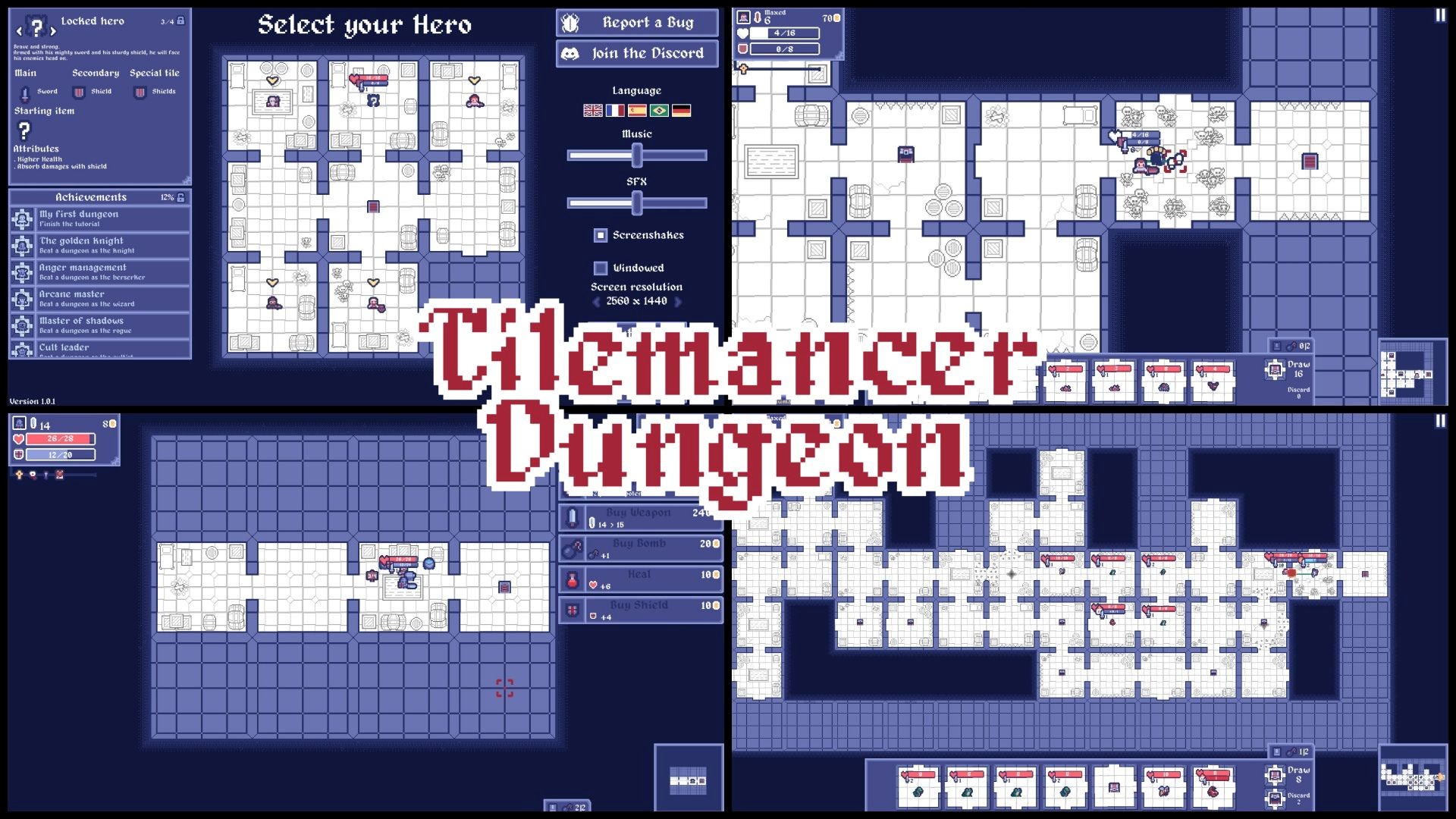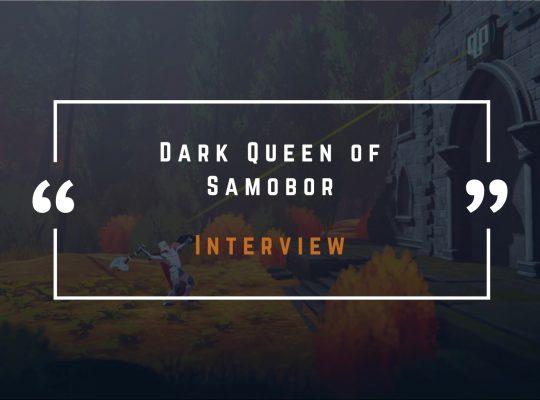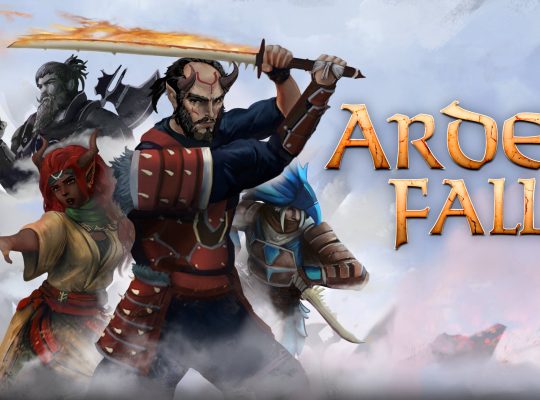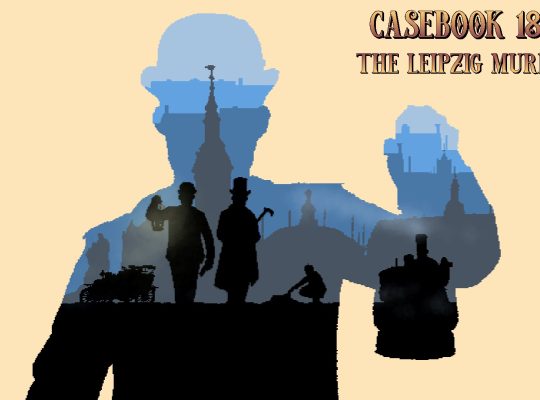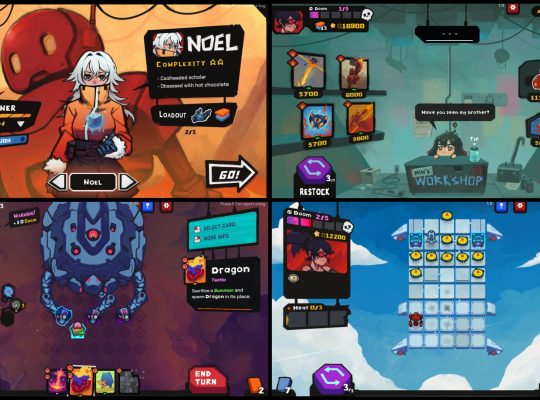Nicolas Szymendera’s journey with Tilemancer Dungeon shows how great indie games can start from simple beginnings. Working alone under his studio Szym Games, he first created the game in just 48 hours for a game jam. That quick prototype grew into a special mix of dungeon exploration and card game strategy, where players build dungeons piece by piece.
This developer’s story shows how passion and persistence pay off. From loving video games as a kid to working in web development and finally returning to game-making, their journey proves it’s never too late to follow your dreams. After practicing through many game jams and taking the brave step to go full-time indie in 2024, they created Tilemancer Dungeon, a simple but fun game that came from working with tight deadlines. We talked with Nicholas about how the game started, the design hurdles they faced, and the personal wins that made it all possible.
Tilemancer Dungeon is out now on Steam for PC. If you’re on the fence about getting it, check out our review first to help you decide.
To start, could you share a bit about your journey as a developer? How did you get into game development?
I’ve loved video games for as long as I can remember and always wanted to make them. In high school, I created my first game. It was a very small and pretty bad adventure game made on RPG-Maker. I never showed it to anyone, but working on it made me fall in love with coding and creating stuff. A few years later, I went to a computer science school to learn programming and become a developer.
After school, I started working as a back-end web developer. I was good at it, and it was easier to get hired in that field as a junior than in the game industry. It also paid better, and I had student loans to pay off. I worked in web development for seven years and mostly enjoyed it, but it was never a real passion.
In 2020, during COVID lockdowns, I had a lot of free time. That’s when I decided to get back into game development. I learned C# and Unity, and after a few months, I started joining as many game jams as possible. Game jams are events where developers make small games or prototypes in a short time based on a theme. Over two years, I joined 20 jams, learning as much as I could about game design, animation, and development.
By late 2023, I felt confident in my skills and was in a good financial position to turn my hobby into a full-time job. So, at the start of 2024, I quit my job to go indie and began working on Tilemancer Dungeon.
Tilemancer Dungeon combines dungeon crawling with card game mechanics where players build their own dungeons using tiles. What inspired this fusion?
Tilemancer Dungeon actually began as a game jam project. It was originally called “This is your dungeon” and was made for the Kenney Jam in 2023. The theme was exploration, and we had an extra rule, we could only use assets provided by Kenney, the jam host.
Game jams can be really intense. You only have a short time, in this case 48 hours, to come up with an idea that fits the theme and then actually build it. I wanted to try something with grid placement and tile matching, and I found an asset pack perfect for a dungeon crawler. Since the theme was exploration, I decided to make a game about building and exploring your own dungeon.
Looking back, I think the stress, time limit, and restrictions of the jam actually helped shape the idea. Sometimes, limitations force you to get creative! You can still find the prototype from the jam via this link.
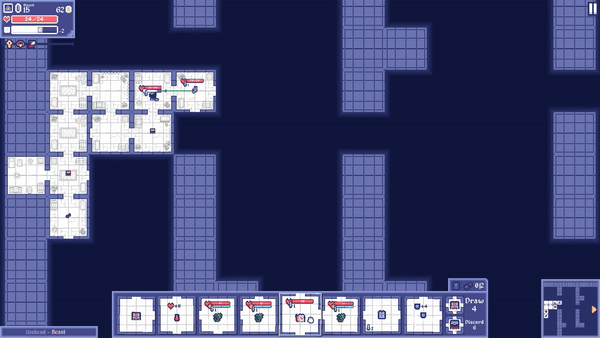
The minimalist design, pixel graphics, simple UI, sets Tilemancer Dungeon apart. Was this a deliberate choice from the start, or did it evolve as you worked on the concept?
It’s actually both. The pixel art style is the same as the prototype’s, though I’ve changed a lo, —recoloring, editing, and even making my own sprites. You can still spot some original assets here and there. I chose to stick with this style for a few good reasons.
First, I’m a developer, not an artist. My pixel art skills are decent, but not amazing, and I struggle with starting from scratch. Working with an existing style and improving it helped a lot, thanks to Kenney for that! As a solo developer, you have to pick your battles, and having this base saved me time so I could focus on gameplay and content.
Second, the core idea, building your own dungeon by placing rooms, isn’t common in games. I kept the visuals simple to keep the focus on gameplay and make it easier for players to understand. Honestly, every design choice I made serves that goal, even the character classes, they’re classic archetypes players already know. Everything on screen should be clear at a glance. The gameplay itself is unique enough; adding complex visuals or lore might’ve been overwhelming. So I kept it simple.
Last reason is I think it looks nice like that.
How did you settle on the idea of players building their own dungeons rather than exploring pre-designed ones? What was the “aha” moment that convinced you this was the right direction?
I didn’t really think of it that way. I just wanted to try matching tiles together to make paths. The rest of the game sort of grew from that basic idea. There wasn’t really an “aha” moment since I made the prototype in just 48 hours and that doesn’t leave a lot of time to reflect on what you’re doing since you have to work fast if you want to have a chance to finish. But I do remember other developers in the jam really liked the core concept and gameplay. Their positive feedback showed me this might be more than just a quick prototype, that I might have something special worth expanding.
Where did the initial spark for Tilemancer Dungeon come from? Was it born from a love of dungeon crawlers, card games, or something entirely unexpected?
At my old job, my coworkers and I loved playing tabletop games during lunch breaks. Our favorite was “Saboteur”, this awesome card game where you play as dwarves digging tunnels to reach gold. You build paths by playing tunnel cards and connecting them until someone hits the treasure. That game’s tile-matching mechanic really inspired me. This game is what made me want to experiment with that mechanic and make a game around it.
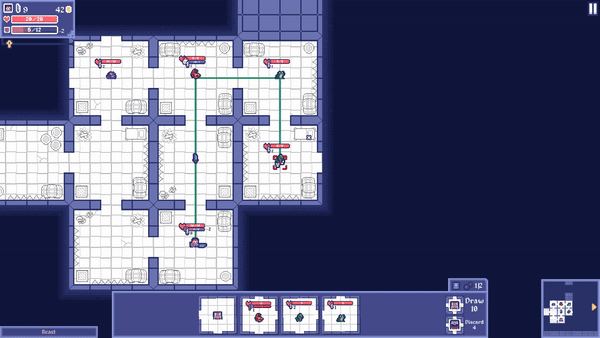
Looking back at your journey, what was the toughest technical hurdle you faced while developing Tilemancer Dungeon?
By far, the controllers support. The game was originally designed for mouse controls, you’d just drag and drop tiles and click rooms to guide your hero. Just coming up with a control scheme that would let the player do all of that with joysticks and still feel intuitive and nice was already a nightmare to be honest. The most challenging part was definitely navigating from room to room with the destination cursor.
It might sound simple, but trust me, it’s not. With a mouse, players do half the work by pointing exactly where they want to go. But with a controller? The cursor needs to predict where players want to move when they tilt the joystick, and doing that on a node system that keeps changing and can have holes is a real mind twister.
It took me weeks to figure it out and probably added a few white hairs on my head. But in the end, I’m honestly really happy with how the game feels with a controller. Plus, I get to play on my Steam Deck… so totally worth the struggle!
The game gives players a lot of freedom, like choosing where to place rooms, when to fight, and when to heal, but the core objective is always to reach the dungeon boss. How did you approach balancing this open-ended design? Were there any challenges?
Balancing that aspect of the game actually wasn’t that complicated. Each level has a fixed set of rooms in its deck plus a variable set depending on your class. But, in the end, the repartitions on the number of doors & their orientation is always the same. Weaker enemies are in rooms with less doors that are harder to place and less convenient to use. Stronger enemies are in rooms with more doors that give more options but are harder to defeat. Bonuses such as potions are more scarce and don’t always lead you in the direction you need.
The rest of the game kinda balances itself. If the players try to cheese the game by mostly going through potions and chests they won’t gather enough gold coins to spend between levels and will end up being too weak to go through the last levels. If they try to kill too many monsters to grind for gold, they take the risk of running out of health and end up stuck or dead.
In later levels, the initial layout of the dungeon is partially blocked and forces the hero to go through bottle-necks which greatly reduce the players freedom to place rooms wherever they want. Add some spike traps that hurt the hero every time he goes through those bottle-necks to reduce backtracking and the players already have a lot less freedom and a lot more challenges. The hardest part was settling on level sizes; it doesn’t feel too small but also doesn’t let players grind too much.
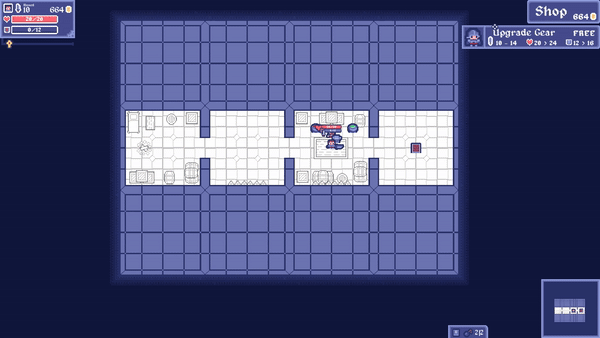
How many heroes are in the game, what’s unique about them and which one is your favorite?
There are 20 heroes split evenly in five classes. The Knights is the base class you’ll start with. They use shields which make them very tanky and therefore very forgiving in terms of placement and perfect to learn the game and the Berserkers who use a system of rage making them hit harder the more they fight.
The are also Wizards that can kill at a distance but have very low health. Forcing you to manage their mana so you don’t end up in melee. The rogues on the other hand can sneak on their enemies and lure them into traps, while the Cultists start very weak but get stronger the more enemies are alive in the level. You’ll unlock two heroes right away for each class and will have to find the other ones. My favorite one is the hidden ones. So… It’s a secret!
Traps, loots, and equipment are part of the dungeon tiles. How impactful are they for the gameplay?
They’re vital. In order to beat each boss you have to gear up by upgrading your weapon in each level and manage your potions and bombs so you don’t end up dead or stuck. The traps are here to reduce the ability of players to backtrack through levels and therefore increase the difficulty on later levels.







